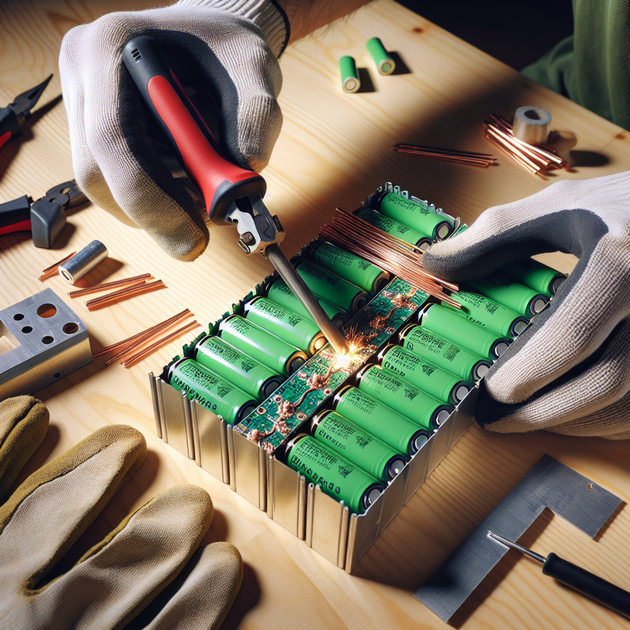Are Reused Li-ion 18650A Batteries Safe for Custom Packs?
Ever wondered why some folks are so cautious about using old laptop cells for new projects? When it comes to building your own battery packs—especially with recycled Li-ion 18650A batteries—safety is more than just a buzzword. These cells pack a punch in terms of energy density, but if handled incorrectly, they can become serious fire hazards.
Understanding the Unique Risks of Li-ion Chemistry
Li-ion batteries like the popular 18650A offer far more energy in a smaller space compared to older lead-acid or gel designs. That’s why they’re found in everything from laptops to electric bikes. But their high energy density comes with its own set of challenges.
Here’s where things get tricky: inside each cell, if lithium dendrites form (tiny metallic growths), they can bridge the anode and cathode. This can cause an internal short circuit that basically lets current flow uncontrollably—leading to rapid heat buildup and the risk of thermal runaway (an unstoppable chemical reaction). In worst-case scenarios, this can result in fires that are notoriously hard to put out.
If you want a primer on lithium battery hazards and prevention best practices, check out this comprehensive guide from Battery University.
BMS Modules: The Heart of Safe Battery Packs
To keep things under control, every DIY lithium battery pack should have a Battery Management System (BMS). A decent BMS monitors individual cell voltage during both charging and discharging cycles. This helps prevent overcharging (which leads to heat and possible cell rupture) or over-discharging (which can damage the cells permanently).
There are plenty of affordable BMS modules online designed specifically for packs built from reused or new Li-ion cells. For a basic 3S (three cells in series) setup—which gives you roughly the “12V” needed for many applications—a matching “3S BMS” module will do the job for most hobbyist uses. If you want details on how these work and what features matter most, this explainer by Lithium Battery PCB is worth checking out.
But not all modules are created equal. Here’s what you should look for:
- Cell count compatibility: Make sure your BMS matches the number of series-connected cells.
- Current rating: The BMS must handle the maximum current your load will draw.
- Balancing function: This keeps all cells at similar voltages.
How to Build a Reliable 12V Pack with Reused Cells
So how do you actually assemble these into a functional—and safe—battery pack? Here’s a straightforward process:
- Select matched cells: Test all your salvaged cells for capacity and internal resistance to weed out weak ones.
- Create series/parallel groups: For roughly “12V”, connect three cells in series (3S). For more capacity (Ah), add parallel strings.
- Solder carefully or use spot-welding: Spot-welding nickel strips is safer than soldering directly onto cell terminals.
- Add your chosen BMS module: Attach it according to manufacturer instructions—these usually include wiring diagrams.
- Insulate and contain: Use heat-shrink tubing or custom cases to prevent shorts.
For extra peace of mind, always charge and test new packs outdoors or in a fireproof container until you’re confident about stability.
Solar Charging Your Lithium Battery Pack
Charging these packs off-grid is easier than it sounds—with the right gear. A standard solar panel setup paired with an MPPT (Maximum Power Point Tracking) charge controller designed for lithium profiles does the trick.
The steps are simple:
- Choose an MPPT controller that supports “LiFePO4” or “Li-ion” settings.
- Connect your solar panel(s) output directly to the MPPT input terminals.
- The controller output connects straight to your pack—with its own integrated BMS safeguarding every cell.
For more info about choosing and wiring MPPT controllers for lithium setups, check out this clear overview by Victron Energy, one of the leaders in off-grid solar systems.
An Anecdote About Battery Safety
Here’s something that sticks with me—a friend once tried building an e-bike pack from old laptop batteries without using a proper BMS. He thought careful measuring was enough… until one cell overheated during charging and scorched his workbench! He got lucky; nothing exploded. But it was enough of a scare that now he never skips adding good quality protection circuits.
Your Turn: What’s Your Next Project?
Building DIY lithium battery packs isn’t rocket science—but it does mean respecting chemistry as much as circuitry. With solid prep work (especially matching your reused cells), reliable BMS modules sized for your setup, and smart solar charging gear like MPPT controllers, you’re well on your way.
Are you planning any projects using recycled lithium batteries? What safety tips or useful mistakes would you share?

Leave a Reply